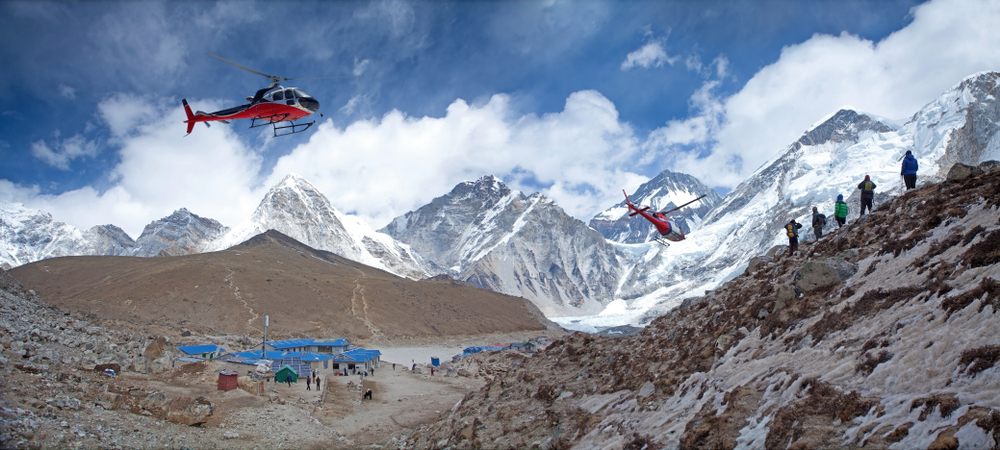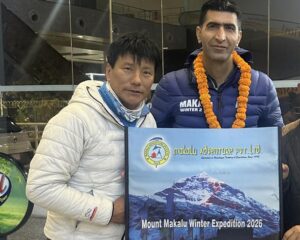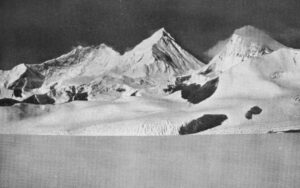Two months ago, it seemed that authorities were going to dial back the craziness of the Everest season a notch or two. It’s turning into the contrary. More helicopters than ever are soaring above Everest Base Camp, the Khumbu Icefall and even toward the Valley of Silence, which is no longer so silent.
In an unprecedented “one-time” decision, helicopters will be allowed this season to carry gear and supplies to Camp 2 at 6,400m. Ropes for fixing the route were also airlifted in. A strong sherpa team quickly set to work and has already reached the South Col at 7,900m.
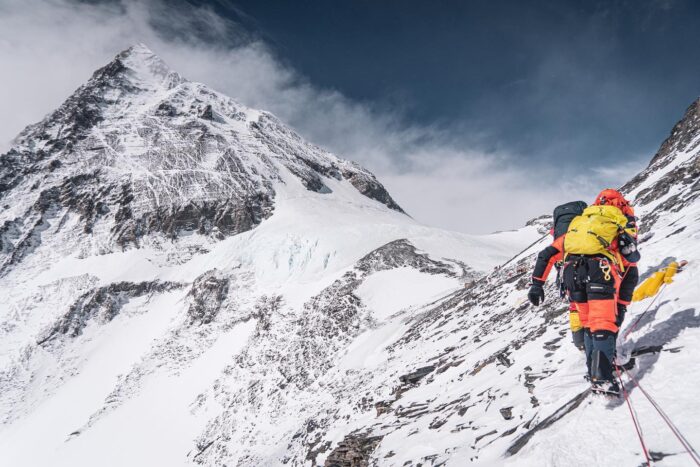
Sherpas approach the South Col on Everest. Photo: Seven Summit Treks
Summits next time
The rope fixing is progressing quickly, thanks to these aerial resupplies and a remarkably numerous team of fixers. Eleven sherpas with Seven Summit Treks reached Camp 4 yesterday. On their next foray, they will go for the summit.
When that will happen is still literally up in the air. The jet stream is currently hitting the summit with very high winds that won’t drop until at least Sunday. Lakpa Sherpa, CEO at 8K Expeditions, told ExplorersWeb that their planned summit day is May 5.

Multimodel forecast by Meteoexploration.com for Everest summit this week.
After the sherpa, the clients behind may take several more days. The guides still have to supply Camp 4 with gear and especially oxygen bottles.
The only climbers willing to get high that quickly are those climbing independently, carrying their own gear and tent. Piotr Krzyzowski, who is doing Lhotse, has reached Camp 2, where he is currently resting. He intends to go to Camp 3 tomorrow.
Norrdine Nouar, who is climbing Everest without oxygen, was also moving to Camp 2 today. He plans to go from there to Camps 3 and 4 on acclimatization trips. Only then will Nouar return to Base Camp for a final rest before he makes his no-O2 summit push around May 20.
For commercial teams, pitching and supplying camps is happening faster than ever, thanks to the helicopters.
Forget the silence
Until now, helicopters were allowed above Base Camp only for rescues and to carry equipment (and possibly staff) needed to fix the route to the summit. However, the delay in opening the route through the Khumbu Icefall this season, and the longer, riskier route, has prompted authorities to reverse policy and let helicopters carry all kinds of equipment to Camp 2.
The measure responds to the pressure applied by powerful outfitters, determined to have the route ready for a summit push during the weather windows of late May, before the monsoon. Everest Chronicle quotes Mingma Sherpa, CEO of Seven Summit Treks, that a timely summit push would be impossible this season without more reliance on helicopters.
Lakpa Sherpa of 8K Expeditions confirmed that they are allowed to drop oxygen and other equipment at Camp 2.
On the one hand, the measure will increase safety for local workers, who will avoid long trips through the Icefall, slowed down by heavy backpacks. On the other hand, the initiative is far from environmentally friendly and goes against the previous intention by Khumbu authorities to downsize the impact of human activities on the mountain. In the end, it sets an important precedent: the Khumbu Icefall will be always dangerous, so the safety argument may be valid in the future as well.
” caption=”false”]
Finally, the presence of helicopters may increase the temptation to increase the profit of a trip by carrying clients hoping to avoid the Icefall directly to Camp 2. Last year, 23 Everest climbers admitted they took helicopters in the opposite direction, from Camp 2 to Base Camp, to shortcut the way down.
Drone solution?
Recently, some have suggested using cargo drones as a greener alternative, and local authorities have listened. This spring, a DJI FlyCart 30 drone will carry garbage from Camp 1 down to Base Camp, The Himalayan Times reports. In normal conditions, the 65 kg drone can carry up to 95kg and fly 28 km. It remains to be seen how it performs between 5,350m and over 6,000m on Everest. The drone is fueled by two electric batteries and the pilot maneuvers the craft from Base Camp.
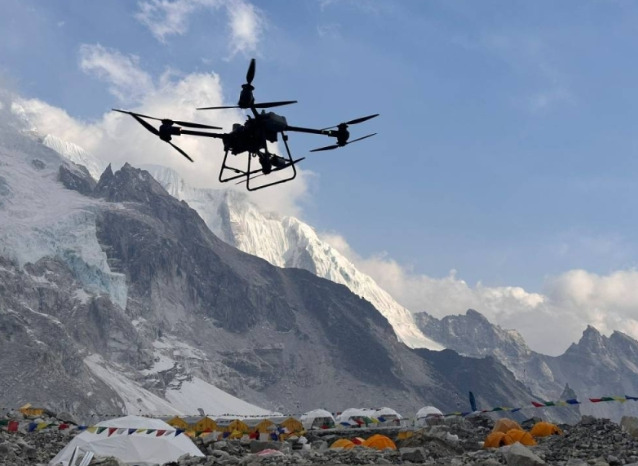
A cargo drone flies over a base camp. Photo: The Himalayan Times
Other 8,000’ers
There might be summits on Dhaulagiri this week if the winds drop.
“Ropes are fixed until 7,300m and the plan was to reach the summit on May 3,” Nivesh Karki of Pioneer Adventure told ExplorersWeb. “However, winds look still high then. Anyway, the summit push should happen before May 5.”
On Makalu, most climbers have already rotated to Camp 2 or even Camp 3. Poland’s Bartek Ziemski, who plans to ski from the summit, checked conditions by skiing from 7,300m back to Camp 1.
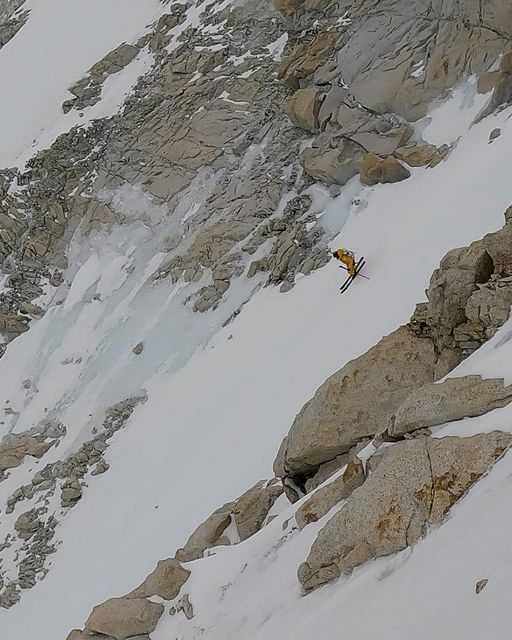
Bartek Ziemski skis on Makalu. Photo: Oswald R. Pereira
